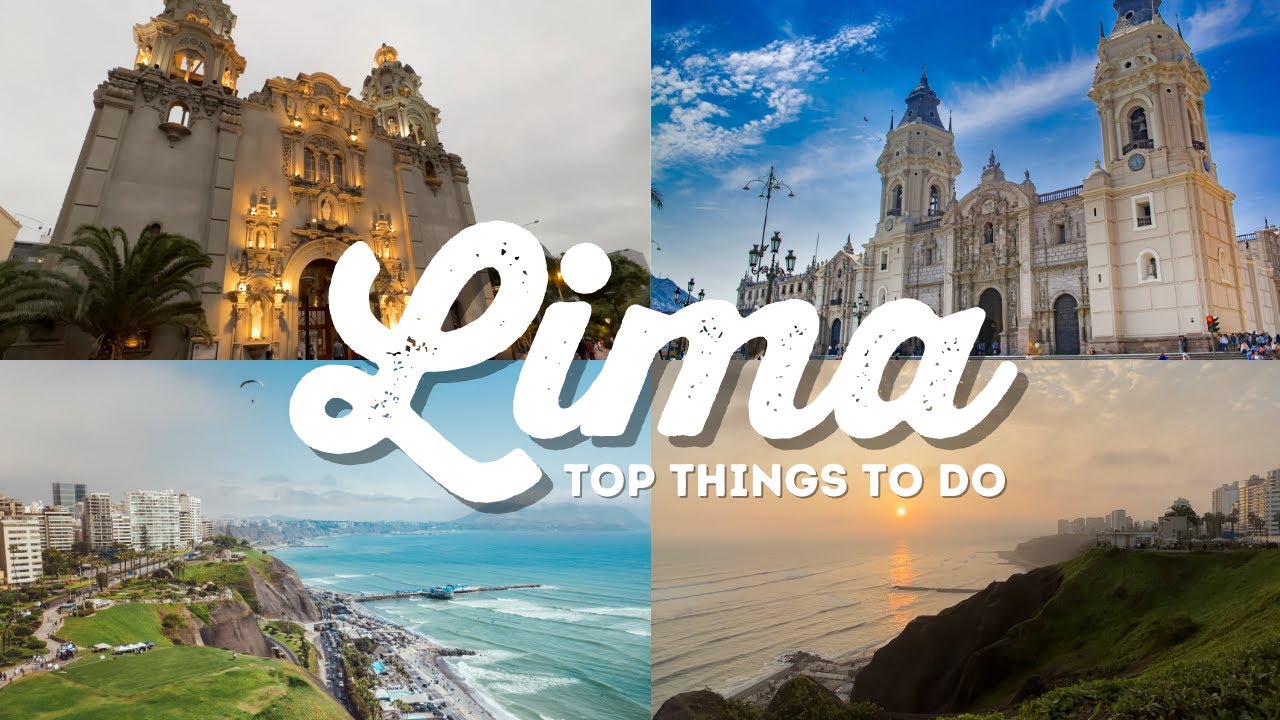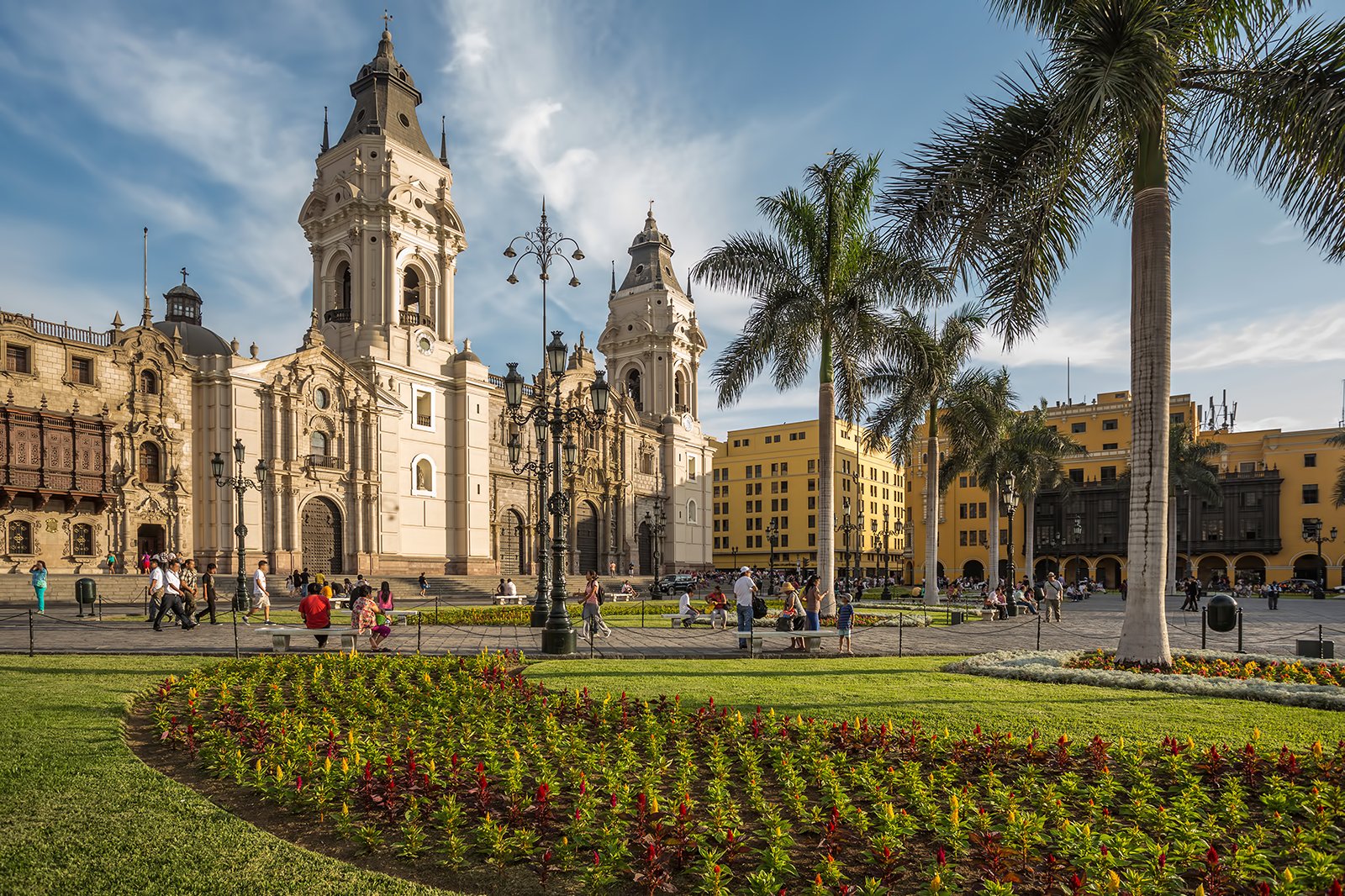
Lima, the sprawling capital of Peru, is a city that hums with an infectious energy, a vibrant tapestry woven from ancient Incan whispers, colonial grandeur, and a pulsating modern spirit. Often overlooked in favor of its more famed Andean counterparts, Lima is a destination that deserves its own spotlight, particularly for its world-renowned culinary scene and its rich, multifaceted history. From the glittering Pacific coastline to the labyrinthine streets of its historic center, Lima offers a captivating experience for every traveler. This comprehensive guide will equip you with everything you need to embark on an unforgettable journey to this South American gem.
A Glimpse into Lima’s Storied Past
To truly appreciate Lima, understanding its historical evolution is key. Founded by Spanish conquistador Francisco Pizarro on January 18, 1535, as the "City of Kings" (Ciudad de los Reyes), Lima quickly became the administrative and cultural heart of the vast Viceroyalty of Peru. Its strategic location on the coast made it a vital port for trade and a hub for Spanish power in South America. The city flourished, attracting wealth and artistic talent, evident in its magnificent colonial architecture, exemplified by its numerous churches, convents, and grand mansions.

Related Articles about Lima: A Culinary and Cultural Odyssey – Your Ultimate Travel Guide:
- The Ultimate Guide to Miami: Sun, Culture, and a Vibe Like No Other
- Manchester: A City Reborn, Brimming with Culture, History, and Unforgettable Attractions
- Ein Traum Wird Wahr: Your Comprehensive Guide to Traveling to Germany
- Sunshine, Stars, and Endless Possibilities: Your Ultimate Guide to Traveling to Los Angeles
- Nepal: A Journey to the Rooftop of the World
However, Lima’s history is also marked by dramatic events. It was the target of numerous pirate attacks during the colonial era and suffered greatly during the War of the Pacific in the late 19th century, when Chilean forces occupied the city. The 20th century brought rapid urban growth, transforming Lima into the metropolis it is today, while also grappling with social and economic challenges. Yet, through it all, Lima has retained its historical soul, with its UNESCO World Heritage-listed Historic Center standing as a testament to its enduring legacy.
Unveiling Lima’s Top Attractions
Lima’s appeal lies in its diverse array of attractions, catering to history buffs, foodies, art lovers, and those seeking coastal charm.
1. Historic Center (Centro Histórico): A UNESCO World Heritage site, this is where Lima’s colonial past truly shines.
- Plaza Mayor (Plaza de Armas): The heart of the historic center, this grand square is surrounded by stunning architecture, including the Government Palace, the Archbishop’s Palace, and the Cathedral of Lima. The Cathedral, where Pizarro’s remains are said to be interred, is a masterpiece of Renaissance and Baroque design.
- Convento de San Francisco: This 17th-century convent is a must-visit for its exquisite tiled cloisters, intricate artwork, and, most famously, its eerie catacombs, where the remains of thousands of early Limeños are interred.
- Casa de Aliaga: The oldest continuously inhabited colonial house in the Americas, this private residence offers a fascinating glimpse into the lives of Lima’s elite during the colonial period.
- Museo de la Nación: While not strictly in the historic center, this museum offers a comprehensive overview of Peruvian history and archaeology, from pre-Inca civilizations to the present day.

2. Miraflores: The Modern Coastal Gem: This upscale district offers a vibrant blend of modernity, stunning ocean views, and a lively atmosphere.
- Malecón de Miraflores: A picturesque promenade stretching along the cliffs overlooking the Pacific Ocean, perfect for leisurely strolls, cycling, or simply enjoying the sunset.
- Parque del Amor (Love Park): A romantic spot adorned with mosaics and a striking sculpture, offering panoramic ocean views.
- Larcomar: A modern shopping mall built into the cliff face, offering a unique shopping experience with breathtaking ocean vistas, as well as restaurants and entertainment.
- Huaca Pucllana: An impressive adobe pyramid dating back to the Lima culture (200-700 AD), offering a fascinating glimpse into pre-Inca urbanism.
3. Barranco: The Bohemian Heartbeat: Lima’s bohemian district is a haven for artists, creatives, and those seeking a more laid-back, eclectic vibe.
- Puente de los Suspiros (Bridge of Sighs): A charming wooden bridge where, legend has it, lovers can make a wish while crossing.
- Art Galleries and Boutiques: Barranco is dotted with numerous art galleries showcasing local talent, as well as quirky boutiques and artisanal shops.
- Street Art: The walls of Barranco are adorned with vibrant murals and graffiti, reflecting the district’s artistic spirit.
- Plaza de Barranco: The central plaza is a lively hub with cafes, restaurants, and often live music.
4. Gastronomic Delights: Lima is unequivocally the culinary capital of South America, and exploring its food scene is an attraction in itself.
- Ceviche: The undisputed national dish, fresh raw fish marinated in lime juice, chili, and onions.
- Lomo Saltado: A delicious stir-fry of beef, onions, tomatoes, and french fries, often served with rice.
- Aji de Gallina: Shredded chicken in a creamy, spicy sauce made with yellow chili peppers, walnuts, and bread.
- Pisco Sour: The iconic Peruvian cocktail, a refreshing blend of pisco, lime juice, sugar, egg white, and bitters.
- World-Class Restaurants: Lima boasts some of the world’s best restaurants, including Central, Maido, and Astrid y Gastón, offering innovative and traditional Peruvian cuisine.
Essential Travel Tips for Lima
- Language: Spanish is the official language. While English is spoken in tourist areas and hotels, learning a few basic Spanish phrases will greatly enhance your experience.
- Currency: The Peruvian Sol (PEN). US dollars are also widely accepted in tourist areas, but it’s advisable to have soles for smaller purchases.
- Safety: Like any large city, Lima has areas to be cautious in. Stick to well-lit and populated areas, especially at night. Be mindful of pickpockets in crowded markets and on public transport. It’s advisable to use reputable taxi services or ride-sharing apps.
- Altitude: Lima is at sea level, so altitude sickness is not a concern, which is a welcome relief for those traveling from higher elevations.
- Water: It’s best to drink bottled water to avoid any potential stomach issues.
- Tipping: Tipping is customary in restaurants (around 10%) and for tour guides and drivers.
- Sun Protection: Even on cloudy days, the sun can be strong. Pack sunscreen, a hat, and sunglasses.
- Bargaining: In markets, bargaining is expected, but do so respectfully.
Accommodation Options in Lima
Lima offers a wide range of accommodation to suit every budget and travel style.
- Luxury Hotels: Miraflores and San Isidro boast world-class hotels like the JW Marriott Hotel Lima, Belmond Miraflores Park, and Hotel B, offering impeccable service and stunning amenities.
- Boutique Hotels: Barranco is home to charming boutique hotels like Hotel B, known for its art-filled ambiance, and Second Home Peru, a stylish guesthouse.
- Mid-Range Hotels: You’ll find numerous comfortable and well-located mid-range hotels throughout Miraflores and San Isidro, offering good value for money.
- Hostels: For budget travelers, hostels are abundant in Miraflores and Barranco, providing a social atmosphere and affordable dorms or private rooms.
- Apartment Rentals: Platforms like Airbnb offer a wide selection of apartments, ideal for longer stays or for those who prefer self-catering options.
Getting Around Lima
Navigating Lima can be an adventure in itself, but with a little planning, it’s manageable.
- Taxis: Taxis are readily available. It’s highly recommended to use "sitio" taxis (from official stands) or book through your hotel or a reputable app like Uber or Cabify. Avoid hailing random taxis on the street, especially at night.
- Ride-Sharing Apps: Uber and Cabify are popular and offer a convenient and generally safe way to get around.
- Metropolitano Bus System: This modern bus rapid transit system is an efficient way to travel between key districts like Miraflores, Barranco, and the Historic Center. Purchase a rechargeable card at the stations.
- Traditional Buses (Combis): While extensive, these are often crowded, chaotic, and can be confusing for tourists. It’s best to stick to the Metropolitano or taxis.
- Walking: Miraflores and Barranco are very walkable districts, perfect for exploring at your own pace. The Historic Center is also best explored on foot.
The Best Time to Visit Lima
Lima enjoys a temperate desert climate, meaning it’s rarely extremely hot or cold. However, the weather can be characterized by a persistent cloud cover, known as "garúa," particularly during the winter months.
-
Best Time (Dry Season): April to November is generally considered the best time to visit. The skies are clearer, and there’s less humidity. This period offers pleasant temperatures for sightseeing and outdoor activities.
- April to June: Pleasant temperatures, fewer crowds, and the start of the drier season.
- July to September: Cooler temperatures, but still comfortable. This is a great time for whale watching if you venture further south.
- October to November: Warmer temperatures as the dry season continues, with increasing sunshine.
-
Shoulder Seasons:
- March: Still warm and sunny after the summer months.
- December to February (Summer): This is Lima’s hottest and most humid period. While there’s more sunshine, it can be quite muggy. This is also peak tourist season, so expect more crowds and higher prices.
Key takeaway: While Lima is a year-round destination, aiming for the dry season from April to November will likely offer the most consistently pleasant weather for exploring its many wonders.
Embark on Your Lima Adventure
Lima is a city that will surprise and delight you at every turn. It’s a place where ancient history meets contemporary vibrancy, and where the world’s finest flavors are celebrated with passion. Whether you’re drawn by the allure of its colonial past, the promise of culinary ecstasy, or the simple beauty of its coastal vistas, Lima offers an enriching and unforgettable travel experience. Pack your bags, open your mind, and prepare to be captivated by the City of Kings. Your Peruvian odyssey begins here.





